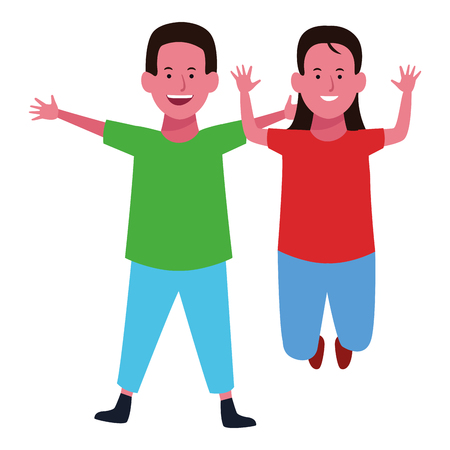1. Understanding the Importance of Parent Training in Autism Rehabilitation
Pediatric autism rehabilitation programs in the United States have increasingly recognized that involving parents and families is essential to a child’s progress. Parent training and family support are now considered best practices for achieving meaningful outcomes for children with autism spectrum disorder (ASD). This approach empowers families, helps children generalize skills, and creates a supportive environment at home and beyond.
Why Parent and Family Involvement Matters
Children with autism often benefit from consistent routines, strategies, and communication methods across settings. When parents are trained, they can reinforce therapies outside of clinical sessions. Research shows that active family participation leads to:
- Better communication skills in children
- Improved social interaction
- Reduced behavioral challenges
- Increased independence
- Greater satisfaction for families
Best Practices in U.S. Pediatric Autism Programs
The most effective pediatric autism programs across the U.S. offer parent training as a core service. These programs use evidence-based approaches like Applied Behavior Analysis (ABA), speech therapy, and occupational therapy while providing practical coaching for families. Key components include:
| Best Practice | Description |
|---|---|
| Parent Coaching Sessions | Therapists work directly with parents to demonstrate techniques and answer questions. |
| Home Program Support | Families receive resources and step-by-step guides to practice at home. |
| Cultural Sensitivity | Programs tailor training to reflect each family’s cultural background and values. |
| Peer Support Groups | Opportunities for parents to connect, share experiences, and reduce stress. |
| Regular Progress Reviews | Clinicians meet with families to set goals and monitor their child’s improvements together. |
Real-World Outcomes for Families and Children
When parents feel confident using new strategies, children are more likely to succeed in school, social settings, and everyday life. Family-centered care models help build strong partnerships between clinicians and caregivers, which leads to positive changes not just for the child but for the entire family unit.
2. Culturally Responsive Approaches for American Families
When supporting children with autism, it’s important to recognize that every family is unique. American families come from many different backgrounds, have a variety of traditions, and may have different beliefs about parenting and disability. To provide effective parent training and family support in pediatric autism rehabilitation programs, professionals need to understand and respect these differences.
Why Cultural Responsiveness Matters
Families are more likely to participate in therapy and use strategies at home when their cultural values are respected. This helps build trust between families and providers, leading to better outcomes for the child. For example, some families may prefer group learning, while others value privacy or individual coaching. Some families may include grandparents or extended relatives in caregiving, while others may focus on parents only.
Key Aspects of Culturally Responsive Support
| Aspect | Example |
|---|---|
| Family Structure | Recognizing single-parent households, blended families, multigenerational homes, LGBTQ+ parents, etc. |
| Cultural Beliefs | Respecting how different cultures view autism, disability, and therapies. |
| Communication Styles | Using plain English, offering interpreters, or providing materials in other languages if needed. |
| Religious Values | Accommodating prayer times or dietary restrictions during sessions or group events. |
| Community Connections | Partnering with local organizations trusted by diverse communities. |
Practical Ways to Tailor Support
- Ask Questions: Begin by asking families about their routines, beliefs, and what works best for them.
- Flexible Scheduling: Offer evening or weekend sessions for working parents or those with multiple caregivers involved.
- Culturally Relevant Materials: Use examples and visuals that reflect the family’s culture and everyday life.
- Family-Centered Goals: Work together with the whole family to set goals that matter most to them—not just the provider’s priorities.
- Create Safe Spaces: Make sure all families feel welcome and respected regardless of background or family makeup.
The Value of Community Partnerships
Pediatric autism programs can connect with churches, neighborhood centers, parent support groups, and other community resources that already serve local families. These partnerships help build trust and make services more accessible for everyone.
This approach ensures that every family feels seen, heard, and empowered to support their child’s development on their own terms.

3. Evidence-Based Strategies for Parent Training
Overview of Practical Approaches in the U.S.
In pediatric autism rehabilitation programs across the United States, parent training and family support are crucial for helping children thrive at home and in the community. Many families benefit from evidence-based strategies that empower them to support their child’s development. Two of the most widely used methods are parent-mediated interventions and positive behavior support (PBS). These approaches are well-researched and have been shown to make a real difference in daily life.
Parent-Mediated Interventions
Parent-mediated interventions involve teaching parents specific techniques they can use with their child during everyday routines. Rather than relying only on therapy sessions, parents become active partners in their childs progress. Here are some common elements:
| Technique | Description | Everyday Example |
|---|---|---|
| Modeling | Parents demonstrate skills or behaviors for the child to imitate. | Showing how to wave goodbye during morning routines. |
| Prompting | Using cues or reminders to encourage desired actions. | Gently guiding a child’s hand to point at objects when naming them. |
| Reinforcement | Praising or rewarding positive behaviors right after they occur. | Giving a high-five when a child makes eye contact during playtime. |
| Naturalistic Teaching | Embedding learning opportunities into daily activities. | Practicing requesting items while preparing snacks together. |
Why Parent-Mediated Interventions Work
These strategies work because they create consistent learning moments throughout the day. Parents are with their children more than any therapist can be, so their involvement leads to more opportunities for skill-building and communication practice.
Positive Behavior Support (PBS)
PBS is another cornerstone of family-centered autism care in America. The main goal is to understand the reasons behind challenging behaviors and replace them with positive alternatives. Here’s how PBS is typically applied:
| PBS Step | Description | Example in Action |
|---|---|---|
| Identifying Triggers | Observing what happens before problem behaviors start. | Noticing that tantrums often happen before mealtimes. |
| Teaching New Skills | Helping children learn better ways to communicate or cope. | Teaching a child to ask for a break instead of screaming when overwhelmed. |
| Changing the Environment | Making small adjustments to prevent triggers. | Simplifying instructions or providing visual schedules at home. |
| Praising Positive Behaviors | Acknowledging improvements with encouragement and rewards. | Praising calm waiting while dinner is prepared. |
The Role of Families in PBS
PBS works best when everyone involved with the child—parents, siblings, teachers—uses the same approach. Family members learn together how to spot early warning signs, stay calm under stress, and celebrate every success, big or small.
4. Family Support Resources and Community Connections
Overview of Support Networks for Families
Raising a child with autism in the United States can feel overwhelming, but families do not have to face it alone. There are many support networks, social services, and advocacy groups that offer guidance, information, and emotional support throughout your journey. Finding the right resources can make a big difference in your familys well-being and your childs progress.
Key Resources Available for Families
| Type of Resource | Examples/Organizations | How They Help |
|---|---|---|
| Support Groups | Autism Society of America, local parent groups, online forums (e.g., MyAutismTeam) | Emotional support, sharing experiences, practical advice from other parents |
| Social Services | State Disability Services, Early Intervention programs (IDEA Part C), Medicaid Waivers | Access to therapies, financial assistance, respite care, service coordination |
| Advocacy Organizations | Autism Speaks, The Arc, National Autism Association | Education rights, policy advocacy, public awareness campaigns, resource navigation |
| Community Programs | Boys & Girls Clubs Inclusive Programs, YMCA Adaptive Programs | Inclusive recreation, social skill development, safe environments for children with autism |
| Educational Support Services | Parent Training Information Centers (PTIs), school district special education offices | IEP/504 Plan guidance, workshops on parental rights, collaboration tips with schools |
Tips for Building Strong Relationships with Professionals
- Be Proactive: Reach out early to teachers, therapists, and healthcare providers. Introduce yourself and share helpful information about your child’s needs and strengths.
- Communicate Regularly: Use emails or notes to stay updated about your child’s progress. Don’t hesitate to ask questions or request meetings when needed.
- Create a Team Mentality: Approach school and healthcare professionals as partners. Express appreciation for their work and be open to their suggestions.
- Stay Organized: Keep copies of important documents like evaluations, therapy reports, and communication logs. This helps you advocate effectively for your child.
- Learn Your Rights: Familiarize yourself with laws such as IDEA and ADA. Many advocacy groups offer free workshops or webinars on these topics.
- Connect Locally: Attend local events or workshops whenever possible. Building face-to-face connections can strengthen your support network.
Culturally Responsive Support in the US Context
The United States is diverse, and families come from many backgrounds. Many organizations now offer materials in multiple languages and work to respect different cultural values. If English isn’t your first language or if you have specific cultural needs, don’t hesitate to ask for support that fits your family’s background.
5. Evaluating Progress and Empowering Families
Tracking Family and Child Outcomes
In pediatric autism rehabilitation programs, it’s essential to monitor both the child’s development and the family’s experience. Regularly checking in on progress helps ensure that therapy is meeting everyone’s needs. Families can use simple tools like journals, checklists, or progress charts to track skills such as communication, daily routines, and social interactions at home.
| What to Track | How to Track | Example |
|---|---|---|
| Child’s Communication Skills | Weekly checklist | Number of words used each day |
| Family Stress Levels | Monthly survey or diary entry | Rating stress from 1-10 |
| Daily Routines and Behaviors | Progress chart | Successful completion of morning routine |
Adapting Plans as Needed
No two families are the same, and every child with autism grows at their own pace. Rehabilitation teams work closely with parents to review goals and make adjustments if something isn’t working. If a certain strategy isn’t helping, or if new challenges come up at home or school, families should feel comfortable reaching out for support and discussing changes with therapists. Flexible plans help children stay motivated and give parents the confidence that they’re on the right track.
Tips for Adapting Plans:
- Schedule regular check-ins with your therapy team (in-person or virtual)
- Keep notes about what strategies work or don’t work at home
- Ask for new resources if you face new challenges (like starting kindergarten or moving homes)
- Celebrate small wins and update goals as your child grows
Promoting Parental Confidence and Resilience
A big part of supporting children with autism is empowering their families. When parents feel confident and supported, kids tend to thrive. Parent training programs can offer helpful tips on managing stress, building routines, and finding balance between therapy needs and family life. Support groups—whether online or in person—can connect parents with others who understand their journey.
Ways to Build Confidence & Resilience:
- Attend parent workshops offered by your rehab program or local community centers
- Join family support groups for shared experiences and advice
- Praise yourself for trying new things—even small steps count!
- Create a “success board” at home highlighting your child’s achievements each month
- Practice self-care activities: take short walks, listen to music, or schedule a coffee break with friends
Your Role Matters!
Families play a key role in every step of their childs progress. By tracking outcomes, adapting plans together with professionals, and building resilience through ongoing support, families set the stage for long-term success in their child’s development journey.


